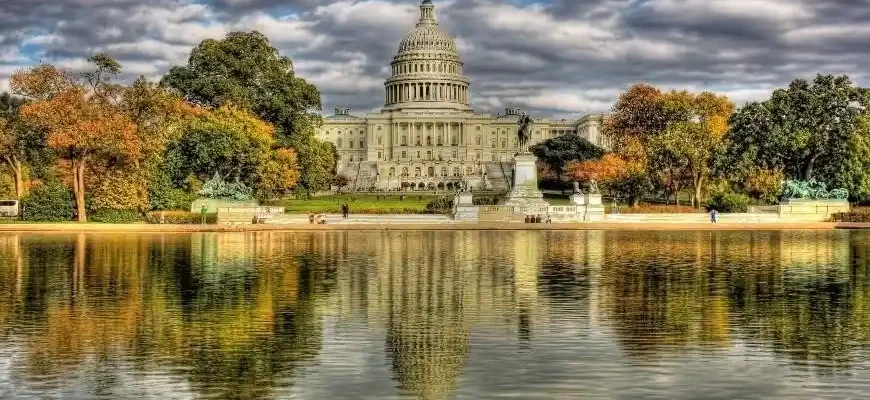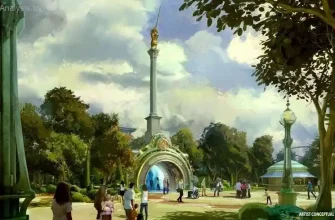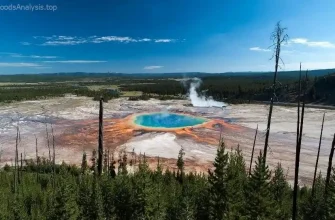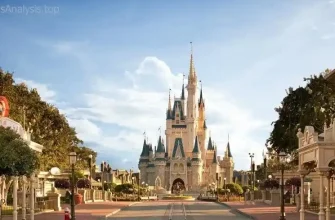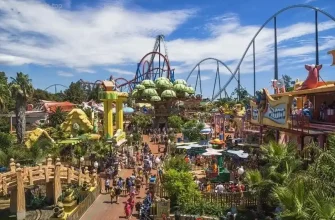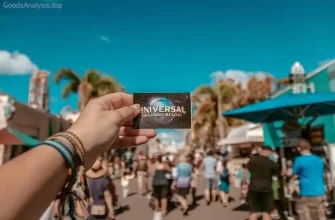The National Mall in Washington, D.C., is the beating heart of American history, culture, and democracy. Stretching across more than two miles in the nation’s capital, the Mall is a grand open space where visitors can stroll through iconic monuments, visit world-class museums, and witness the history that shaped the United States. Whether you’re a history buff, a nature lover, or a casual traveler, the National Mall offers an unforgettable experience. Here’s everything you need to know to make the most of your visit.
What Makes The National Mall Special?
The National Mall is truly the centerpiece of Washington, D.C., and an American icon in its own right. Known for its grand scale, open spaces, and iconic landmarks, the Mall is home to some of the most famous sites in U.S. history, including:
- The Lincoln Memorial: The towering statue of President Abraham Lincoln, overlooking the Reflecting Pool, is one of the most recognized images of American history. It’s here that Martin Luther King Jr. delivered his iconic “I Have a Dream” speech.
- The Washington Monument: At 555 feet, this obelisk is the tallest stone structure in the world. It honors the first U.S. president, George Washington, and offers sweeping views of the city from its observation deck.
- The U.S. Capitol Building: Located at the eastern end of the Mall, the Capitol is where the United States Congress meets. It serves as a symbol of American democracy and government.
- The World War II Memorial: A beautiful and solemn tribute to the 16 million Americans who served in World War II, this memorial features a series of arches, fountains, and inscriptions.
- The Vietnam Veterans Memorial: An emotionally powerful tribute to the U.S. soldiers who fought and died in the Vietnam War, it includes a black granite wall etched with the names of over 58,000 fallen soldiers.
- The Korean War Veterans Memorial: This poignant memorial features 19 stainless steel statues representing a squad on patrol, set against a backdrop of a granite wall inscribed with over 2,500 names.
- Smithsonian Museums: The National Mall is also home to a stunning collection of museums, most of which are part of the Smithsonian Institution. Highlights include the National Museum of American History, the National Museum of Natural History, the National Gallery of Art, and the National Air and Space Museum.

Together, these monuments and museums make the National Mall a vital part of the American experience, symbolizing freedom, sacrifice, progress, and creativity.
Visitor Tips & Practical Information
Best Time to Visit
The best time to visit the National Mall is during the spring and fall. Spring (March to May) offers pleasant temperatures and beautiful blooming flowers, while fall (September to November) features cooler weather and stunning fall foliage. Summer can be very hot and crowded, while winter (December to February) is quieter but much colder, with fewer visitors.
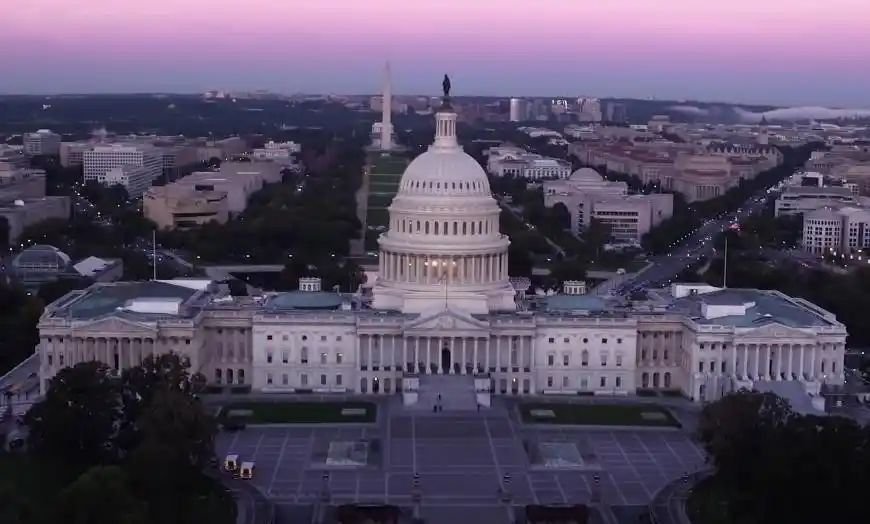
Opening Hours & Ticket Prices
- Monuments and Memorials: The monuments on the National Mall, including the Lincoln Memorial, Washington Monument, and others, are open 24 hours a day, seven days a week. However, it’s best to visit during daylight hours for a full experience.
- Smithsonian Museums: Most Smithsonian museums are open daily from 10:00 AM to 5:30 PM. Admission to these museums is free.
- Washington Monument: The Washington Monument requires tickets for entry, which can be obtained online or in person at the Monument’s ticket office. Tickets are free, but you must reserve them in advance, especially during peak seasons.
Accessibility
The National Mall is fully accessible to visitors with disabilities. There are accessible pathways, ramps, and viewing areas at most of the monuments and memorials. The Smithsonian museums also offer accessible entrances and assistive services, such as wheelchair rentals and captioning for exhibits.
Restrooms & Amenities
Public restrooms are available throughout the Mall, particularly near major landmarks like the Lincoln Memorial and the National Museum of American History. There are also several cafes and food carts scattered across the Mall, offering snacks, sandwiches, and drinks.

History and Cultural Significance
The National Mall has been the site of some of the most significant events in U.S. history. The land was originally designated as a public park in 1791 by Pierre L’Enfant, the French architect who designed Washington, D.C. However, the Mall as we know it today began to take shape in the mid-19th century, with the construction of monuments and memorials to honor key figures in American history.
The Mall’s monuments and museums reflect the nation’s values and struggles. The U.S. Capitol, at the eastern end, has been the seat of American government since 1800. The Lincoln Memorial, dedicated in 1922, stands as a symbol of freedom and equality, while the Vietnam and Korean War Memorials serve as solemn reminders of the sacrifices made in these conflicts. The National Mall has also hosted countless rallies, protests, and celebrations, including Martin Luther King Jr.’s famous “March on Washington” in 1963.
The Smithsonian Institution, founded in 1846, is also a critical component of the Mall. This world-renowned network of museums and research institutions serves to educate the public about America’s past and present, showcasing everything from American history and art to science and culture.
What to Expect When You Visit The National Mall
Visiting the National Mall is like stepping into the heart of U.S. history. As you wander the wide, tree-lined paths, you’ll feel a sense of awe and reverence as you come face-to-face with towering monuments and memorials. The atmosphere is often contemplative, with visitors pausing for moments of reflection at sites like the Vietnam Veterans Memorial and the World War II Memorial.
You can expect to see a mix of tourists, families, and local D.C. residents, many of whom come here to exercise, relax, or enjoy a picnic. The Mall is an open space, so there’s plenty of room to walk, bike, or even rent a pedal-powered surrey bike.
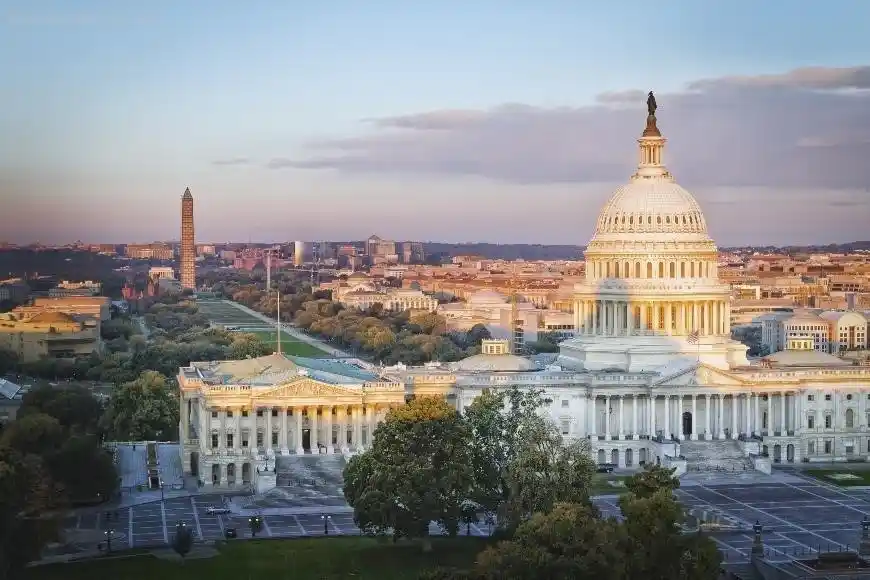
One of the most powerful experiences is visiting the Lincoln Memorial at sunset. As the golden light casts a warm glow on the statue of Lincoln, the Reflecting Pool creates a breathtaking mirror image of the monument. This is an especially popular time for photographers and is undoubtedly one of the most Instagram-worthy moments on the Mall.
Nearby Attractions and Dining Options
Nearby Attractions:
- The U.S. Capitol Building: Just a short walk from the Mall’s eastern edge, the U.S. Capitol is home to the legislative branch of the U.S. government. Guided tours are available, and you can also check out the nearby Supreme Court building and the Library of Congress.
- The Tidal Basin: Located to the south of the Mall, this scenic body of water is famous for its cherry blossoms in the spring and is home to the Jefferson Memorial and the Martin Luther King Jr. Memorial.
- The White House: About a 15-minute walk from the Mall, the White House is another iconic landmark worth visiting. You can view the exterior from the public sidewalk or schedule a tour through your congressperson.
Dining Options:
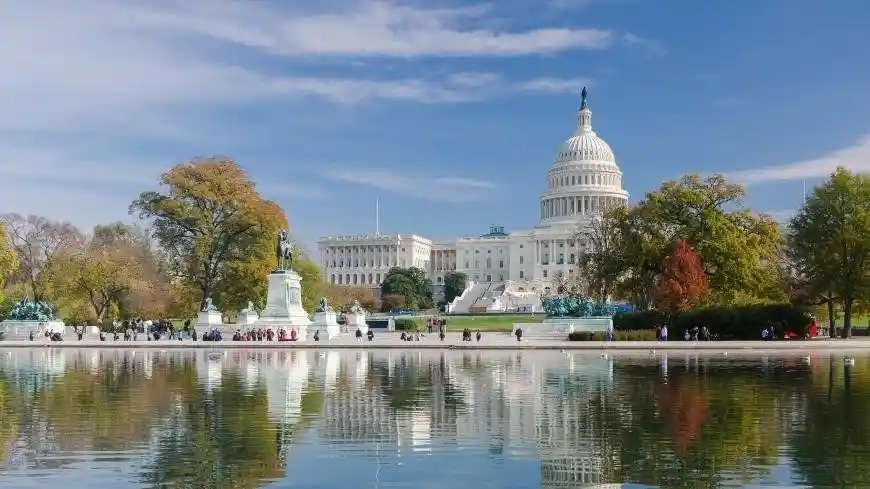
The National Mall area offers a variety of dining options, from food trucks and kiosks to more formal restaurants. Here are some recommendations:
- Founding Farmers: A popular choice located near the White House, this American restaurant serves hearty breakfasts and lunches.
- The Hamilton: Near the National Archives, The Hamilton offers a stylish atmosphere with an extensive menu of American dishes.
- Museum Cafes: Many of the Smithsonian museums, like the National Museum of American History and the National Gallery of Art, have their own cafes serving light meals, sandwiches, and snacks.
Family-Friendly and Group Travel Tips
The National Mall is perfect for families and group visits. The open spaces allow for plenty of room to walk and explore, and there are many interactive exhibits at the Smithsonian museums that will engage children of all ages. The National Museum of Natural History, with its dinosaur skeletons and giant squid display, is a favorite for kids, while the National Air and Space Museum offers a fascinating look at aviation and space exploration.
If you’re visiting with a group, consider booking a guided tour to get the most out of your visit. Many tour companies offer walking or bike tours of the National Mall, providing insights into the history behind the monuments and memorials.
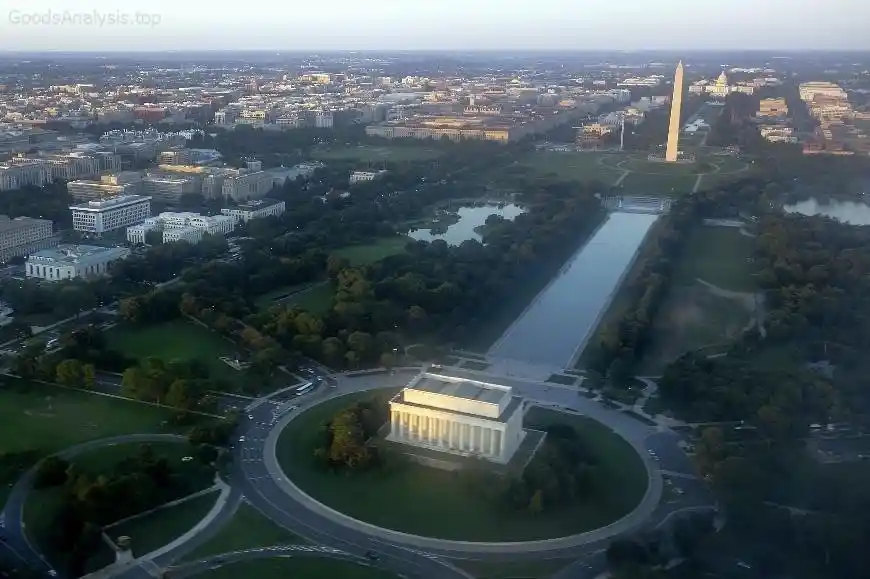
Instagrammable Moments and Photo Opportunities
For the best photos on the Mall, start at the Lincoln Memorial at sunset. The reflection in the water creates a stunning image. The Washington Monument, framed by the trees along the Mall, is also a great spot for photos, particularly in the spring when the cherry blossoms bloom.
The Vietnam Veterans Memorial Wall provides a solemn and poignant backdrop, especially if you can capture the interaction between visitors and the names on the wall. The Smithsonian Castle, with its red brick architecture, is another picturesque spot.
Travel Tips and Transportation
The National Mall is easily accessible by public transportation. The D.C. Metro has several stations nearby, including Smithsonian (on the Orange, Silver, and Blue lines), which is centrally located near the Mall. Buses also run frequently throughout the city.
You can also explore the Mall by foot or rent a bike. The National Park Service offers bike rentals at various locations near the Mall.
Safety and Etiquette Tips
Washington, D.C. is a generally safe city, but as with any large urban area, it’s important to stay aware of your surroundings. Stick to well-lit areas after dark, especially in less crowded sections of the Mall. Be sure to follow local rules and guidelines, such as not climbing on monuments and respecting the memorials as solemn places of reflection.

